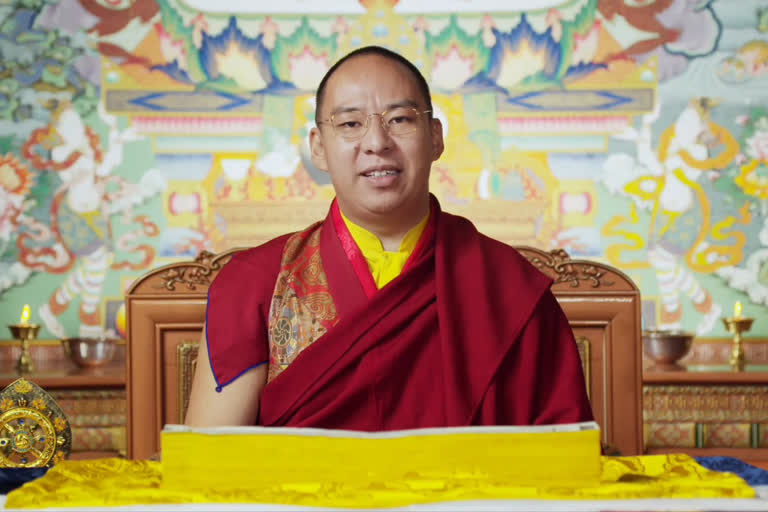New Delhi: Two months before China’s new border law comes into effect, Beijing has made a pre-emptive move on the blurry India-China peripheries by getting Tibetan Buddhist leader the 11th Panchen Lama Gyincain Norbu to declare his support for strengthening the national borders—primarily targeting the India-China border that is inhabited by people of ethnic Tibetan extract.
The Panchen Lama, 31, expressed his support by contributing 1 million yuan (about 156,000 US dollars) on Friday.
Chinese media quoted him as saying at a ceremony in Lhasa: “Through the donation, I hope that more young representatives of Tibetan Buddhism will participate in social activities and contribute to national unity, ethnic unity, as well as stable and orderly social development,” Gyincain Norbu was quoted as saying at a ceremony in Tibet’s capital Lhasa.
The media report also said that the funds will be used for strengthening national borders as well as to consolidate other development activities.
Article 11 of the newly-framed border law announced on October 23, 2021, states that “The State shall strengthen publicity and education on land borders, build a strong sense of community of the Chinese nation, carry forward the spirit of the Chinese nation in defending the unity and territorial integrity of the motherland, and enhance citizens' national concept and homeland security awareness, build a common spiritual home for the Chinese nation.”
The donated funds were part of gifts that had poured in for the Panchen Lama after he was conferred the ‘Kachen degree’, considered equivalent to a doctorate degree in modern education, on Tuesday (October 26, 2021), at the Tashilhunpo Monastery in Xigaze, in China’s Tibet Autonomous Region.
The China-appointed Panchen Lama has been consistent in his support for Beijing. In March 2021, he said in an interview that he believes Tibetan Buddhism will adapt to the conditions of a socialist society with Chinese characteristics and move towards ‘sinicisation’.
The religious leader had been studying Buddhist sutras for more than 25 years. He is already part of the Standing Committee of the National Committee of the Chinese People’s Political Consultative Conference, China’s top political advisory body.
The Panchen Lama’s exhortation is significant for several reasons. Besides being seen as an effort to consolidate his support base among Tibetan Buddhists, the process of installing the next Dalai Lama is also expected to begin shortly.
In the Gelug tradition of Tibetan Buddhism, the Panchen Lama is supposed to be second only to the Dalai Lama in terms of authority and status who leads the process of seeking out the next Dalai Lama.
China’s effort to integrate local Tibetans from the Tibet region (Xizang) has met several roadblocks.
Even the move to enlist Tibetans in the People’s Liberation Army (PLA) is reported to have met with limited success with most Tibetans preferring to join the police instead.
Buddhist-majority Tibet and Muslim Uighur-majority Xinjiang have been receiving special focus from Beijing of late, as illustrated by China’s recent white papers on these two regions that attempted to showcase the developments these two regions have undergone.
Interestingly, President Xi Jinping made a sudden visit to the Tibet region on July 22 and 23 when he visited the border city of Nyingchi and then to Lhasa as he posed with the common people with the Potala Palace, the Dalai Lama’s official residence, looming large in the backdrop.
President Xi’s July visit to Tibet was his first one as President. He had last visited the region in 2011 when he was the vice-president.
Ever since the current India-China border conflict broke out in April-May 2020, both the Indian army and the PLA have mobilized and deployed more than 1,00,000 soldiers along with war-like equipment along the LAC and in depth areas, resulting in one of the heaviest force deployments in the difficult border region between the two Asian giants.



